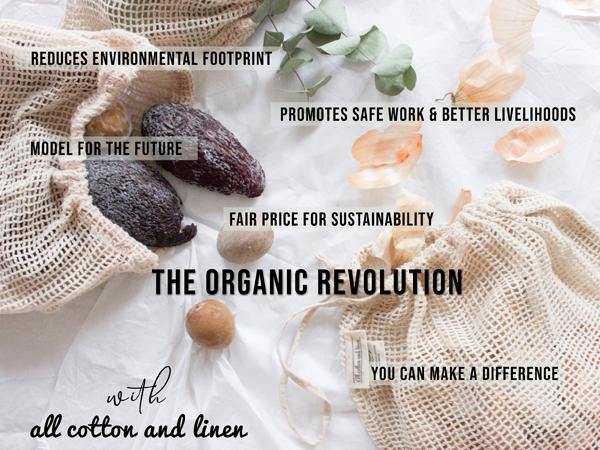As the holiday season approaches or special occasions arise, the thrill of gift-giving often comes with the challenge of finding the perfect wrapping. Traditional wrapping paper, with its single-use nature and environmental impact, can be replaced with more sustainable options that align with our eco-conscious values. Let’s explore some creative and sustainable alternatives that will make your gifts shine while protecting our planet.
1. Reusable Fabric Wraps
One of the most stylish and sustainable ways to wrap gifts is using reusable fabric such as Cotton Napkins. Furoshiki, the traditional Japanese art of wrapping with fabric, perfectly aligns with sustainable practices when using our linen and cotton napkins. These versatile textiles not only serve as beautiful gift wraps but can also be reused in countless ways, making them an eco-conscious choice. Embracing Furoshiki with our products adds a unique, thoughtful touch to your gifts while promoting a zero-waste lifestyle.
2. DIY Wrapping Paper
Get crafty with DIY wrapping paper made from recycled materials. Old maps, newspaper, or brown paper bags can be transformed into personalized wrapping paper with a bit of creativity. Decorate with stamps, drawings, or stickers to add a personal touch. This approach not only reduces waste but also offers a distinctive and heartfelt way to wrap your gifts.
3. Recycled Paper and Cardboard
If you prefer using paper, opt for recycled varieties. Recycled wrapping paper and cardboard are available in many stores and can be just as festive as conventional options. Look for papers made from post-consumer waste or other sustainable sources. By choosing recycled materials, you contribute to reducing the demand for virgin paper and help minimize environmental impact.
4. Gift Bags and Boxes
Reusable gift bags and boxes are practical and sustainable choices. They come in various sizes, designs, and materials, including fabric, striped linen napkins recycled paper, and even upcycled materials. These can be used repeatedly, making them a sustainable alternative to disposable wrapping. After the gift is opened, the recipient can use the bag or box for their own gifting needs.
5. Natural Embellishments
Enhance your gift wrapping with natural embellishments that are both beautiful and sustainable. Consider using elements like dried flowers, pinecones, or twine made from natural fibers. These additions not only make your wrapping stand out but also avoid the use of synthetic ribbons and bows that often end up in landfills.
6. Upcycled Materials
Get creative with upcycled materials from around your home. Fabric scraps, old scarves, or even newspaper can be repurposed into unique wrapping materials. This approach adds a personal and sustainable touch to your gifts while keeping waste out of landfills.
7. Avoiding Glitter and Foil
When selecting wrapping materials, steer clear of options that include glitter or foil. These materials are difficult to recycle and can contribute to environmental pollution. Instead, opt for natural and recyclable materials that align with your sustainability goals.
By embracing these sustainable wrapping methods, you not only reduce your environmental footprint but also add a thoughtful and personal touch to your gift-giving. Let’s celebrate the special moments with gifts that are wrapped in love and respect for our planet.
References:
Wikipedia
- Furoshiki: An overview of the traditional Japanese wrapping cloth.
- Recycling: General information on recycling and its benefits, including recycled paper
- Plastic Pollution: Information on the environmental impact of single-use materials and the importance of reducing waste.
- Sustainable Living: Articles and tips on living sustainably, including gift-giving practices.
- Sustainable Gift Wrapping: Insights and suggestions for sustainable wrapping options.
- Recycling Paper: An educational resource on recycling paper and its environmental benefits.
- Sustainable Living: Articles on sustainable living practices, including sustainable gift wrapping.
- Gift Wrapping Alternatives: Tips for reducing waste with reusable wrapping options.
- Sustainable Gift Wrapping: Advice on sustainable wrapping methods and materials.
- Sustainable Gift Wrapping Ideas: Insights into sustainable gift wrapping practices.
- Recycling Basics: Information on recycling practices, including the benefits of using recycled materials.
- Reducing Waste: Strategies for reducing waste in everyday life, including during gift-giving.




